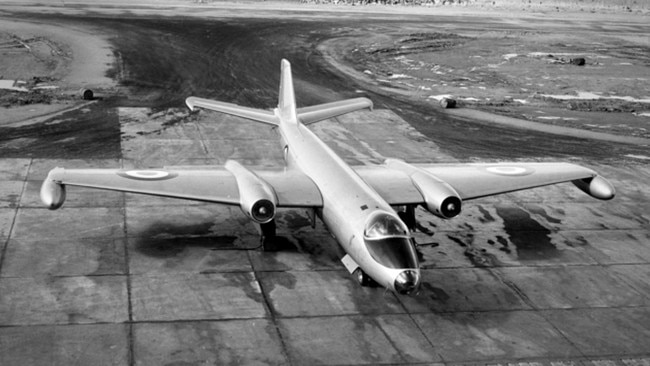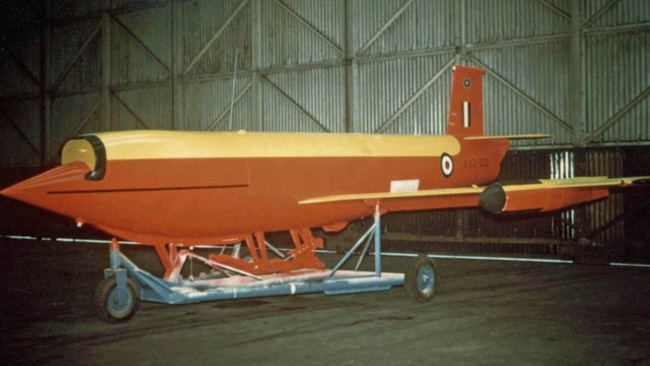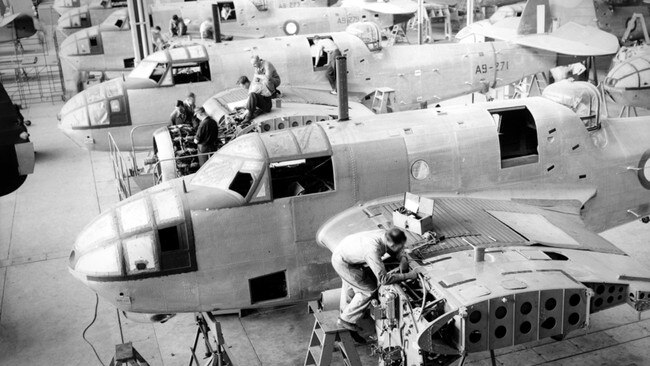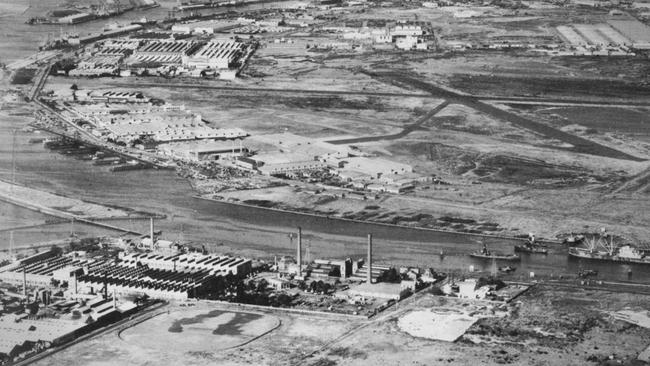Mitchell Toy: The forgotten aviation history of Melbourne’s west
Fisherman’s Bend in Melbourne’s west was once home to a state-of-the-art aviation program. Here’s why it died a slow death.

Victoria
Don't miss out on the headlines from Victoria. Followed categories will be added to My News.
It’s an astonishing and forgotten piece of Melbourne’s aviation history.
World-class pilotless military drones were designed and manufactured at Fisherman’s Bend, as early as the 1950s.
The extraordinary class of aircraft, named Jindivik, was controlled remotely from the ground, could fire a variety of missiles and flares, and flew at an astonishing 900km/h.
Hundreds of the drones were built at the Government Aircraft Factories plant by the Yarra and were exported for use in the air forces of the UK, US and Sweden.
But the state-of-the-art aviation program died a slow death, as Australian manufacturing declined.

Round the bend
At the outbreak of WWII, Australia rushed to design and build the weapons and vehicles needed for victory.
Fisherman’s Bend became the hub of aircraft building and assembly, and the most common plane was the Bristol Beaufort torpedo bomber, manufactured under licence from the UK’s Royal Air Force.
At its peak during the war, the Department of Supply and Development factory would pump out three of the huge planes per week, using many parts manufactured in Victoria and New South Wales.
More than 1000 planes were built at Fisherman’s Bend during the war, and about 20 were left half constructed when the war ended in 1945.
After the war the aircraft factory dropped 90 per cent of its workers, streamlined its operations and was renamed Government Aircraft Factories.

But the advent of the Cold War with the Soviet Union brought a need for new tactics.
In August 1952 a prototype aircraft with a difference was launched in the South Australian desert near the Woomera test range.
Its makers, a mix between British and Australian military staff, watched nervously from the ground as the craft flew 1000km through the air and landed successfully on a skid attached to its underbelly.
Unlike every other aircraft made at Fisherman’s Bend, the new Jindivik Mk1 had no pilot.
Flown by remote control using cutting edge radio technology, it was Australia’s first military drone aircraft.
But the Jindivik, the name for which means “the hunted one” in an indigenous language, was not a combat weapon.
The drone, which could carry out impressive manoeuvres and travel at a top speed of more than 900km/h, was designed as an expendable target for pilot training and missile testing.
For decades, new airborne weapons were tested out on the Jindiviks, many of which were destroyed in the process.

But the drones often held their own, out-flying prototype missiles or trainee pilots, and survived to be flown over and over again, despite earlier models designed with engines that lasted just 10 hours in the air.
The drone operators could send 18 different radio commands to the drones, and more for their on-board equipment, which sometimes included flares, dummy bombs and chaff countermeasures to outwit their human adversaries.
Between the 1950s and 1990s, at least 11 iterations of the Jindivik were produced at Fisherman’s Bend and the drones were used for training across Australia as well as in the UK, US and Europe.
They were typically about 8 metres in length and weighed 1300kg with later models using a Rolls Royce Viper turbojet engine.
More than 500 of the pioneering Jindiviks were made, with just a few surviving today, including at the RAAF Museum at Point Cook.
Eight Jindiviks are preserved in the UK and one is kept by Sweden.

Phased out
The Government Aircraft Factories plant at Fisherman’s Bend produced military aircraft for half a century.
Among its other post-war activities was the production of 48 Canberra B. 20 bomber planes, built under licence from the UK.
Many of the hulking bombers, which had a wingspan of 20 metres, were used by Australian forces during the Vietnam War.
A further 68 Lincoln B. 30 bombers were made at Fisherman’s Bend after the war.
During the 1960s plans were made for a new form of drone called the Turana, but the plans failed and the Jindivik drones were relied upon until the 1990s, when they were replaced by the American Kalkara drone.
The Australian Defence Force now uses a range of unmanned aircraft for reconnaissance, intelligence gathering and target acquisition, including the army’s SHADOW 200 drone.
In 1987 Government Aircraft Factories was reorganised and renamed Aerospace Technologies of Australia before eventually being privatised and incorporated into Boeing Australia.




